Covers for chairs in the kitchen: varieties and choices
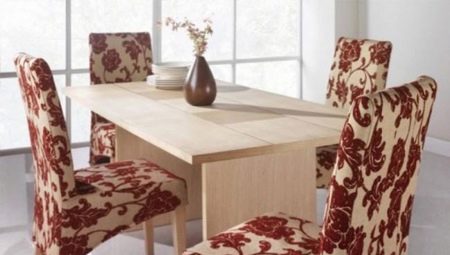
It's no secret that textiles add coziness even to a laconic interior design. Today we are used to using it in every room of our home: curtains, furniture upholstery and even chair covers. In this article, we will look at what covers for chairs in the kitchen are, and also note the main nuances of their choice.
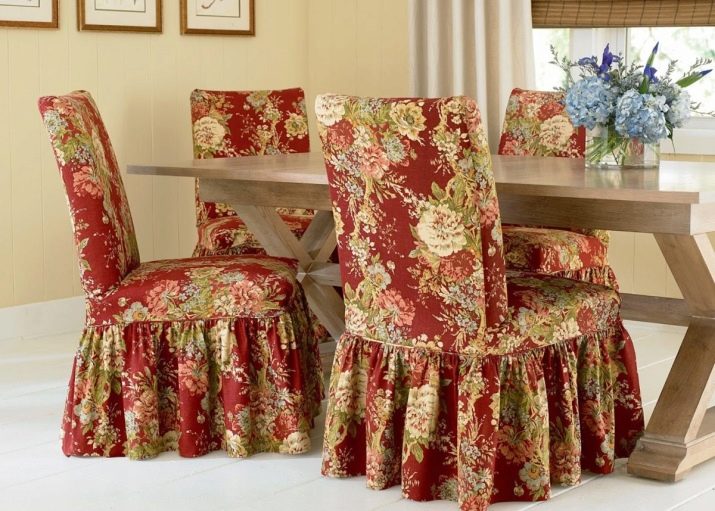

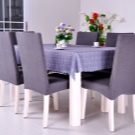
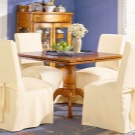
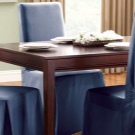
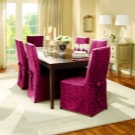
Description and purpose
Chair covers are nothing more than special furniture covers of different cuts and colors. These can be completely laconic removable products with simple clamps or complex covers that pack chairs. Based on the type of chairs, they differ in modification, they can provide for the entire chair to be closed or only its seats. Models differ in the degree of adhesion of the material to the surface of the elements to be closed.
Some of them sit quite tightly, following the contours of the furniture. They are made in the form of a single piece worn on the back. Others are sewn in such a way that they are not worn on chairs, but wrapped with textiles around the back and seat.
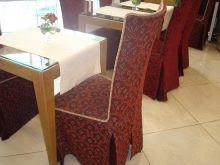

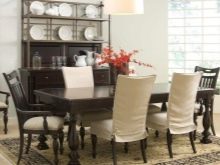
They have ropes to fix the desired shape and density. Products can be one-piece and separate (consisting of elements for the back and seat).
The buyer chooses the type of cut on his own, based on the budget, the specific type of chairs and his own taste preferences. Regardless of the choice of model, it has a decorative and practical function. This product prevents premature destruction of furniture, protecting its work surfaces from accidental scratches and other mechanical damage.
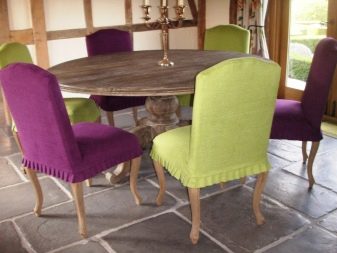
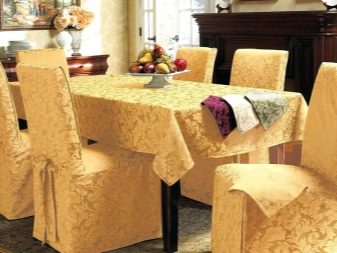
It prolongs the aesthetics of the upholstery and simplifies the maintenance of the furniture.
Besides, capes give chairs a more aesthetic look, ennobling the overall look of the interior... Together with the dining tablecloth, they add elegance to the dining group. Combined with the colors and shapes of the curtains, they make the atmosphere of the room cozy and comfortable at home. When choosing the right design, they become a bright accent of the interior, giving it the necessary status.
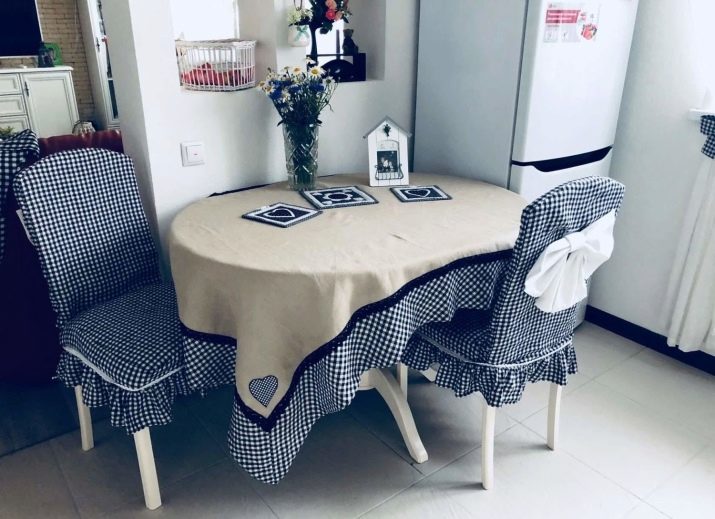
Varieties
Based on the tasks that kitchen chair covers should perform, they can be divided into 2 types.
- Everydaythat you can use every day. Products of this group are intended rather to protect furniture, which is reflected in their cut and shape. They do not have anything superfluous to disturb users. They are made from a more practical non-crease and wash-resistant material, although the textiles can be quite elegant, decorated with a print over the entire area of the material or in the form of a simple ornament.
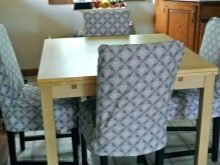
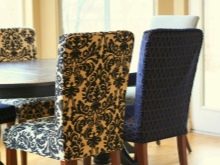

- Holiday covers made for certain celebrations. They are often not so much practical as they are beautiful and hint at something special. Unlike previous models, they are complex in cut, often decorated with ruffles, frills, decorative braid, made of textiles with a shiny or iridescent texture. In addition, bows, ribbons and beads can serve as decorative elements of such products.
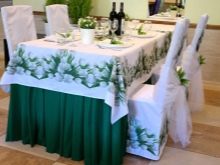
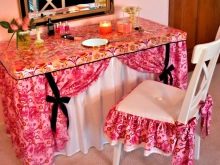
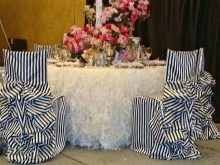
Cape modifications have their own division.
In fact, these are models of the classic or universal type, semi-covers, luxury products, euro models.
Each type of capes has its own characteristics.
- Universal there is nothing more than capes with fixation with elastic bands, loops or bows. They are intended for chairs without armrests. This also includes the so-called back pillowcases and stool covers. Their shape can be classic square or round. Moreover, the strings themselves can even be located on the legs of kitchen chairs.
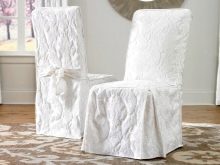
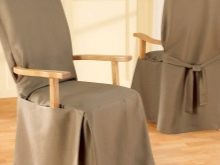

- Semi-covers, in fact, are a shortened version of the universal models. They are fixed by means of elastic bands; the textiles of these capes are usually durable and practical. These models are purchased for decorating chairs in kitchens and living rooms in houses where children live. The legs of the chairs remain open after putting on the covers, which increases the comfort of users when using the chairs.
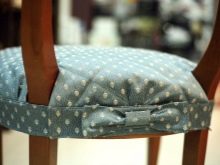


- Luxury models - expensive capes, which are intended exclusively for special occasions (for example, banquets, weddings or other celebrations). Products of this group are made from elegant and expensive materials. In this case, almost always the length of the cover completely covers the legs of the chair. Luxury models are always generous with decorations in the form of bows, ribbons and draperies.
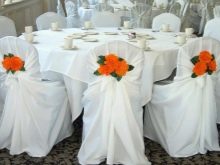
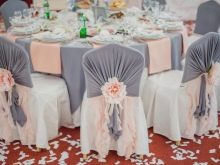
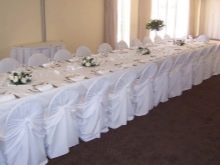
- Eurocovers - a kind of know-how through which you can instantly change the design of kitchen chairs. These models are made from a special tension type material. They are pulled onto chairs, which immediately take on the appearance of small armchairs. This fabric is not susceptible to snags and pet claws. The tension of such covers is especially tight, they do not slip during operation from the chair frame. However, the price of these capes is very high.
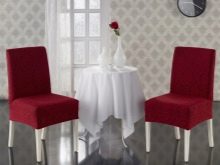
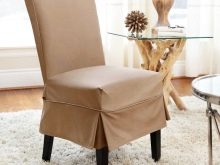
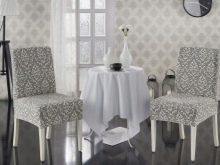
Sizes and shapes
The parameters of removable capes depend on the type of chairs themselves, for example, stools, classic products with backs and bars with a metal frame. Typically, the width of the seat is 40-55 cm with a depth of 40-55 cm. The height of the cover skirt reaches an average of 35 cm, the height of the back from the seat varies from 40 to 70 cm.
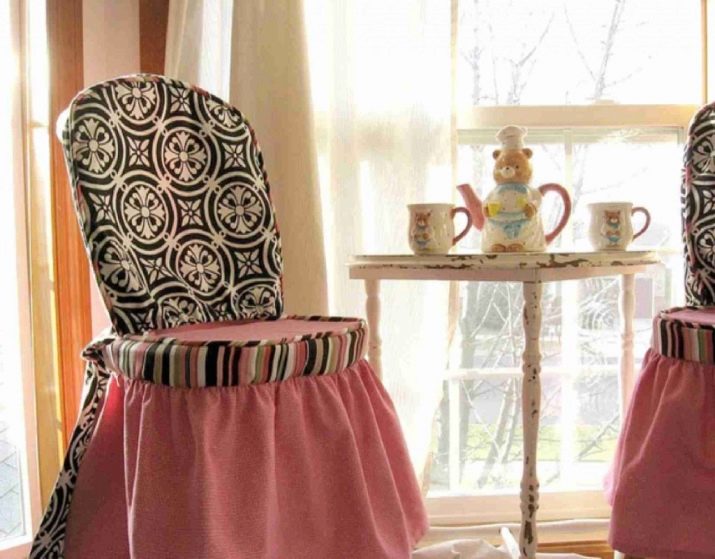
Depending on the chair itself, the dimensions of the cover may vary. To buy what you need, you need to measure specific chairs, choosing options for the width of the backs (from 38 to 47 cm), their height (48-59 cm), the length of the skirt (43-49 for long ones and up to 30-35 cm for short ones). ).
The transition from the seat (from 3 to 10 cm) depends on the thickness of the seat itself, which can be rigid or upholstered. The depth and width of the seat on other models varies from 38 to 47 cm.

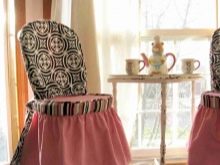
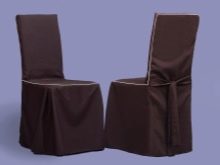
The shape of the models for the seat can be laconic round or square, for the backs it is individual.Some of them are made in the form of a rectangle, in others it is trapezoidal, in others - in the form of a trapezoid with rounded upper corners. All models can be conventionally divided into 3 types: one-piece, separate and seat covers. At the same time, the most difficult from the point of view of the cut are the options of the one-piece type.
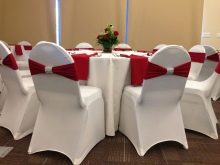
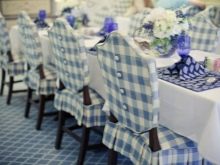
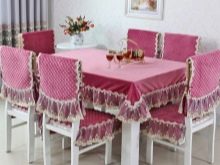
Materials (edit)
Different raw materials are used in the production of chair covers. It can be natural material and synthetic fiber textiles.
Depending on the composition and type of weaving of the threads, the material can have a different structure: some do not stretch, others stretch along the weft, and others are bielastins and stretch in two directions.
However, more often in production, a dense material that is resistant to abrasion is used.
The bulk of the assortment is made from fabrics such as:
- cotton (a budget option, often used when sewing capes at home);
- crepe satin (an alternative to satin and silk, used for decoration);
- spandex (dense fabric with a matte texture, stretches in one direction);
- gabardine (soft and dense material that is resistant to washing);
- microfiber (textiles with a noble look, dense, matte);
- leather (the most expensive raw material with the highest aesthetic characteristics);
- jersey (dense soft fabric that stretches in two directions).
In addition, you can see designer novelties from knitted fabrics in stores.
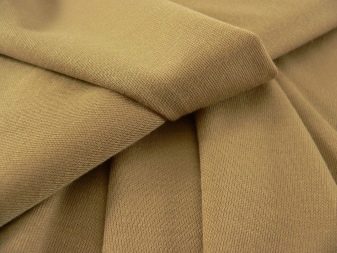
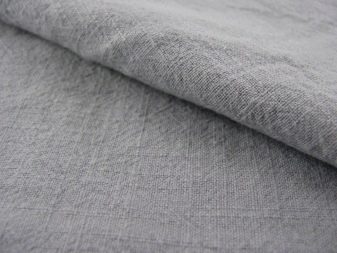
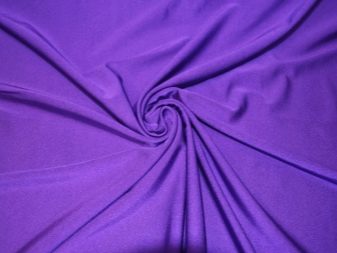

Depending on the type of yarn and the looseness of the knitting, these products vary in the degree of durability and practicality.
For example, some of them lose their attractiveness very quickly, while others decorate kitchen chairs for a long time.
Design and colors
Design solutions for chair covers can be very diverse. It depends, first of all, on the stylistic solution of the interior. In addition, it is influenced by the degree of convenience required for household members.
For example, the most elaborate models can have peculiar crinolines, skirts with frills and draperies, coattails and even textile festoons.
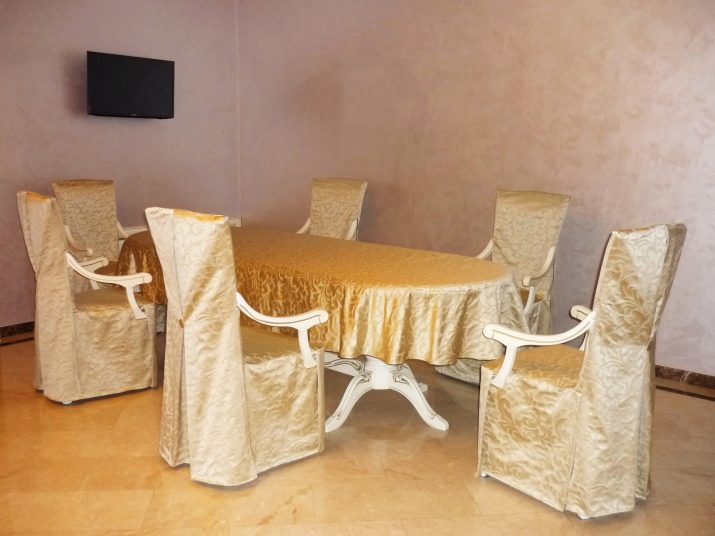
They look very beautiful in the interior of spacious kitchens. At the same time, it is great if such a cut is repeated in the design of the curtains. For example, on sale you can see covers:
- with ruffles from seat to floor, ruffles along the connecting seams;
- with fluffy skirts decorated with folds, flounces, bows;
- in the form of funny toys with muzzles on the backs;
- in the form of euro covers, tightly fitting the chair together with the back;
- consisting of two separate capes, by means of which the working surfaces are separately covered;
- models-aprons with ties on the back of the backs;
- in the form of ball gowns, made of 2-3 types of textiles;
- skirts designed for kitchen stools;
- models with elastic bands for seats and additional padding;
- options with hearts and flowers on the front of the backs.
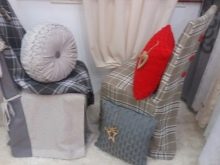

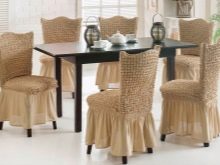
The color solutions of the models obey the background design of the kitchen-living room, as well as tones that match the color of curtains, furniture upholstery, any accessories or wall cladding.
Popular shades of covers for kitchen chairs today are colors:
- lavender and purple;
- lemon and bright yellow;
- wine and burgundy;
- milk and beige;
- orange and sand;
- pistachio and green;
- silver gray and gray blue.
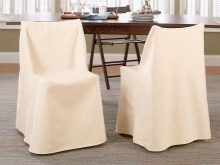

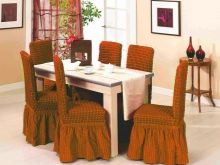
Color combinations can be called spectacular contrasts:
- white with gold;
- dairy with pistachio;
- creamy and blue;
- white with wine;
- nude with burgundy;
- bleached emerald with white;
- purple-burgundy with white;
- gray with white;
- beige with chocolate;
- scarlet with gold;
- fuchsia with white and silver.

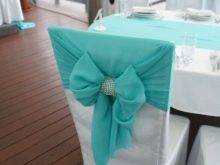
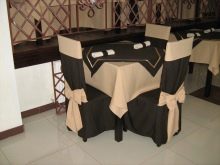
How to choose?
So that the chairs in the kitchen-living room are not only beautiful, but also practical. When buying covers, there are a few basic rules to keep in mind.
- You need to take models from high-quality and practical material. Do not use products in which textiles are prone to pulls or scratches.
- The texture of the textiles of the capes should correspond to the material of the curtains or furniture upholstery.
- The color of the covers should match the shades used in the interior of the kitchen.
- The design is selected taking into account the resources of a certain style, otherwise the models will not fit into the overall interior.
- You need to go to the store for a purchase with accurate measurements of the chairs, including not only the parameters of the width and depth of the seat, but also the height and width of the back.
- The style of the skirt should match the direction of the legs. If they are tilted, the cut should take that into account.
- To make the design of the dining area look holistic, it is better to purchase covers complete with a dining tablecloth.
- The shape of the cut is selected in accordance with the footage of a particular kitchen: the smaller it is, the easier the cut and the fewer decorative elements.
- For small kitchens, it is better to choose models without fluffy skirts: they will interfere with users.
- Covers with puffy skirts on the principle of ball gowns are worth buying only for large rooms in which there is enough space between the chairs. Otherwise, the capes will interfere with the users.
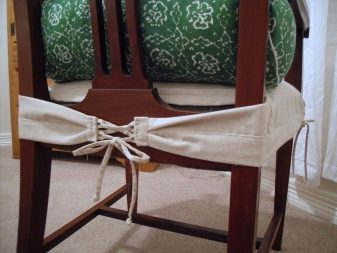
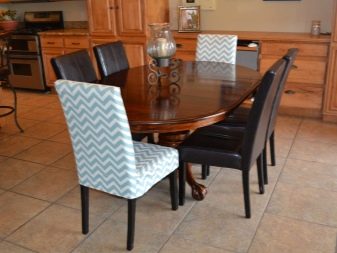
Successful examples in the interior
Here are some examples of beautifully designed kitchen chairs with spectacular covers.
Stylish covers for classic dining.

Beautiful capes for decorating the kitchen-living room.
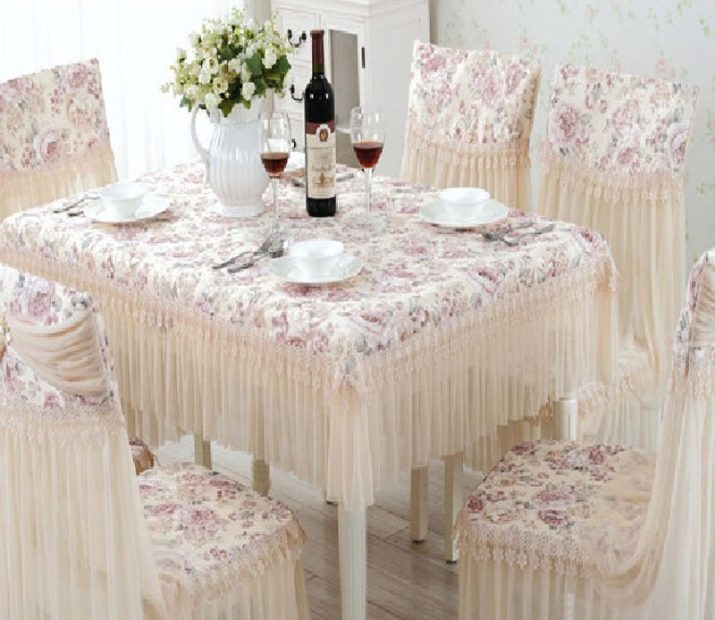
An example of a laconic design of a dining group.

Spectacular models with a similar dining tablecloth design.
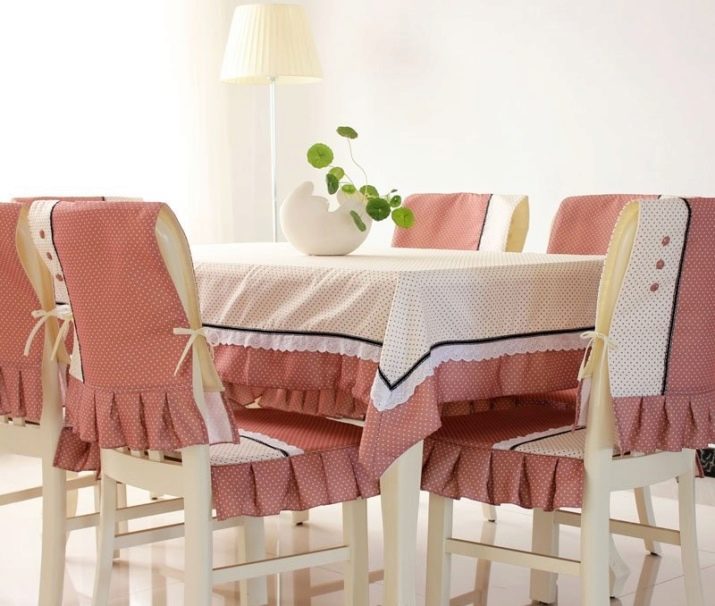
A festive set for special celebrations.
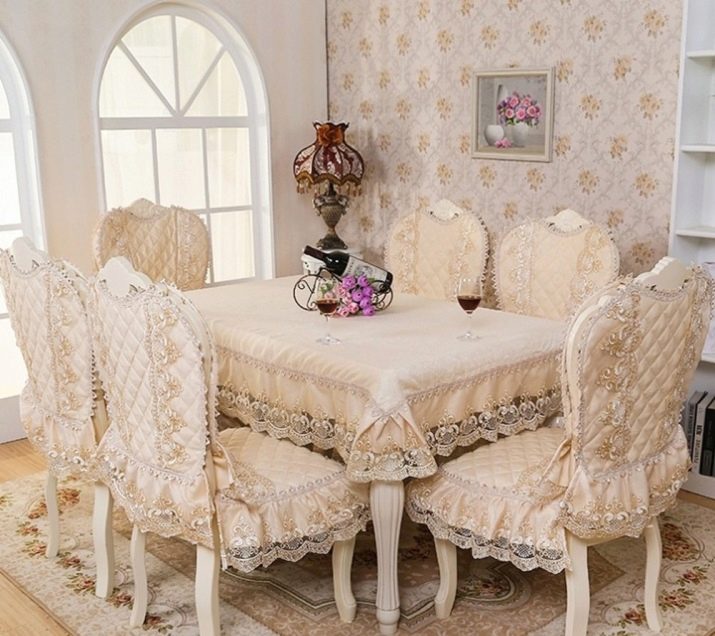
Practical models with a short skirt.
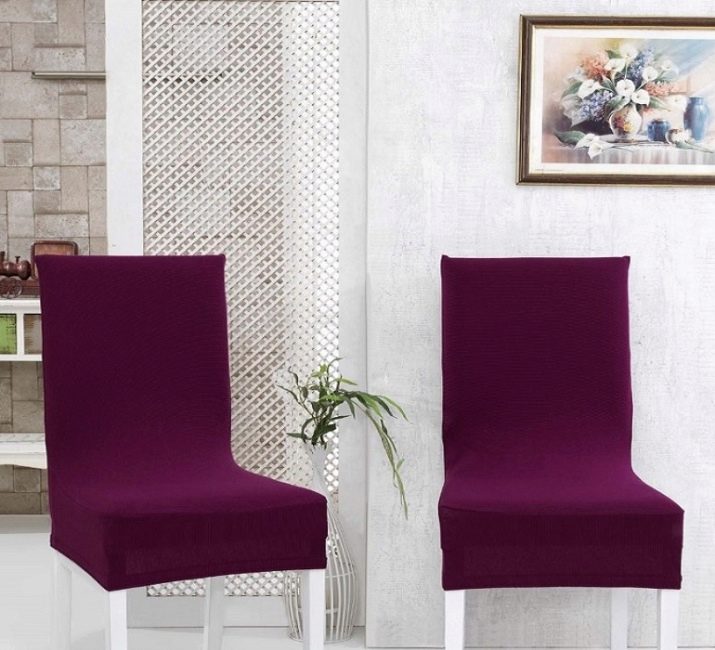
Bright covers for the kitchen group.
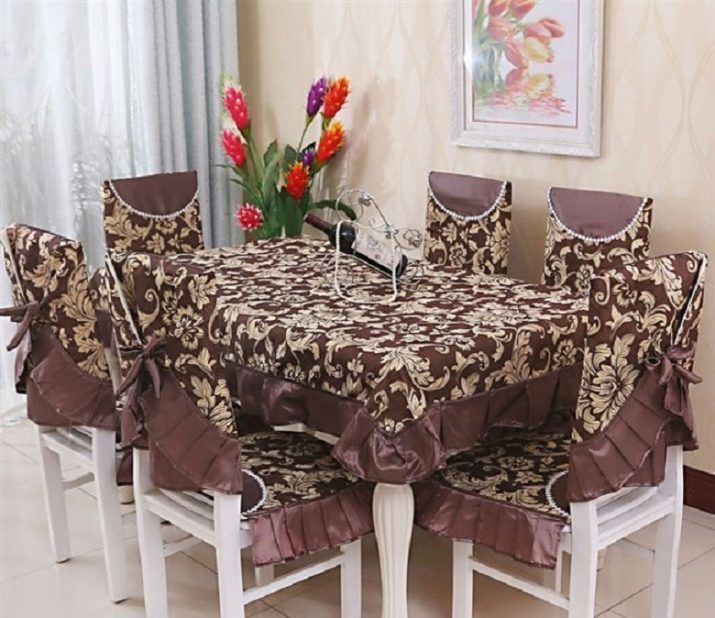
Models for the arrangement of modern kitchens.

Chair covers for Provence style kitchen chairs.
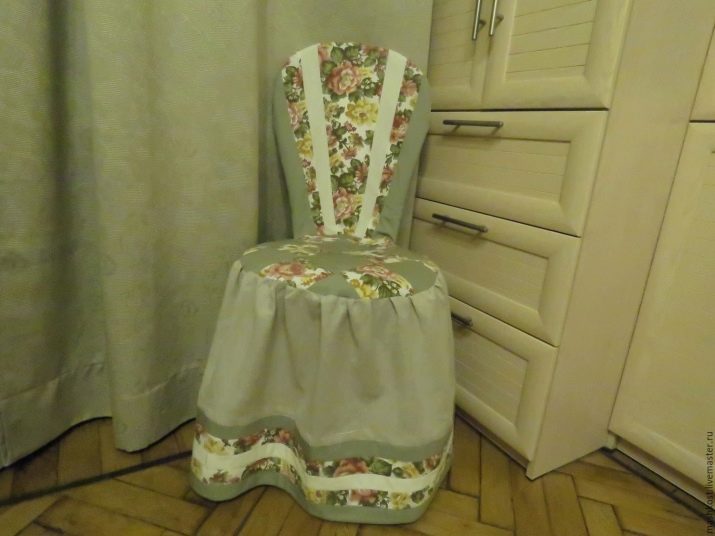
Models for decorating a bright kitchen-living room.
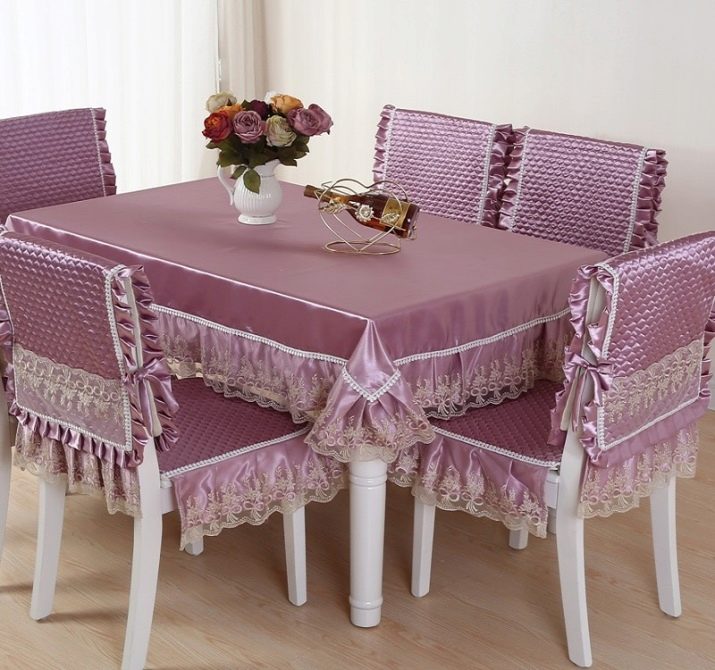
How to sew a chair cover, see below.








